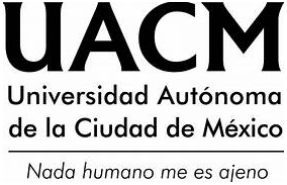Los tejidos de las mujeres de Mampuján: prácticas estético-artísticas de memoria situada en el marco del conflicto armado colombiano
DOI:
https://doi.org/10.29092/uacm.v14i34.563Keywords:
Memoria, tejido social, tejido, pliegue relacional, narrativasAbstract
El presente artículo tiene como objetivo central comprender el despliegue narrativo que ofrecen los tapices elaborados con la técnica quilt (tela sobre tela) por un grupo de mujeres del municipio de Mampuján, víctimas del conflicto armado en Colombia. También pretende evidenciar el papel mediador e intermediador que pueden jugar los tapices como objetos estéticos-artísticos de los procesos de reconstrucción de memoria histórica dentro del entramado relacional en el que son figurados, al evidenciar formas de aprehensión y representación de las lógicas relacionales que fueron planteadas por el conflicto armado en diferentes territorios de Colombia. Como unidad de análisis se eligió el tapiz Gracias por unirse alrededor de un sueño. Los referentes analíticos son la teoría del actor red de Bruno Latour y la metáfora del pliegue de Gilles Deleuze. Además, el análisis de contenido valida la conjunción de las tramas narrativas (de acuerdo con Paul Ricoeur) empleando como técnica analítica y de visualización la producción de grafos narrativos.
Downloads
Published
Issue
Section
License
This Journal is licensed under Creative Commons Mexico 2.5. It is allowed to reproduce and disseminate the contents of the Journal for educational or research purposes, not for profit, as long as they are not mutilated and cite the source (Andamios, Revista de Investigación Social) and the author.
The copyright of the articles published in Andamios, Revista de Investigación Social are transferred by the author(s) to Universidad Autónoma de la Ciudad de México when the originals have been accepted, so that they are published and distributed both in the printed and electronic versions of the Journal. However, as established by law, the author(s) retains their moral rights. The author(s) will receive a form of assignment of copyright that they must to sign when their original has been accepted. In the case of collective articles, the signature of one of the authors will suffice, provided that the latter has obtained the consent of the others.
Authors may use the material of their article in other works or books published by themselves, with the condition of quoting Andamios as the original source of the texts.
The articles contained in this publication are the responsibility of their authors and do not compromise the official position of Andamios, Revista de Investigación Social of the Universidad Autónoma de la Ciudad de México.


